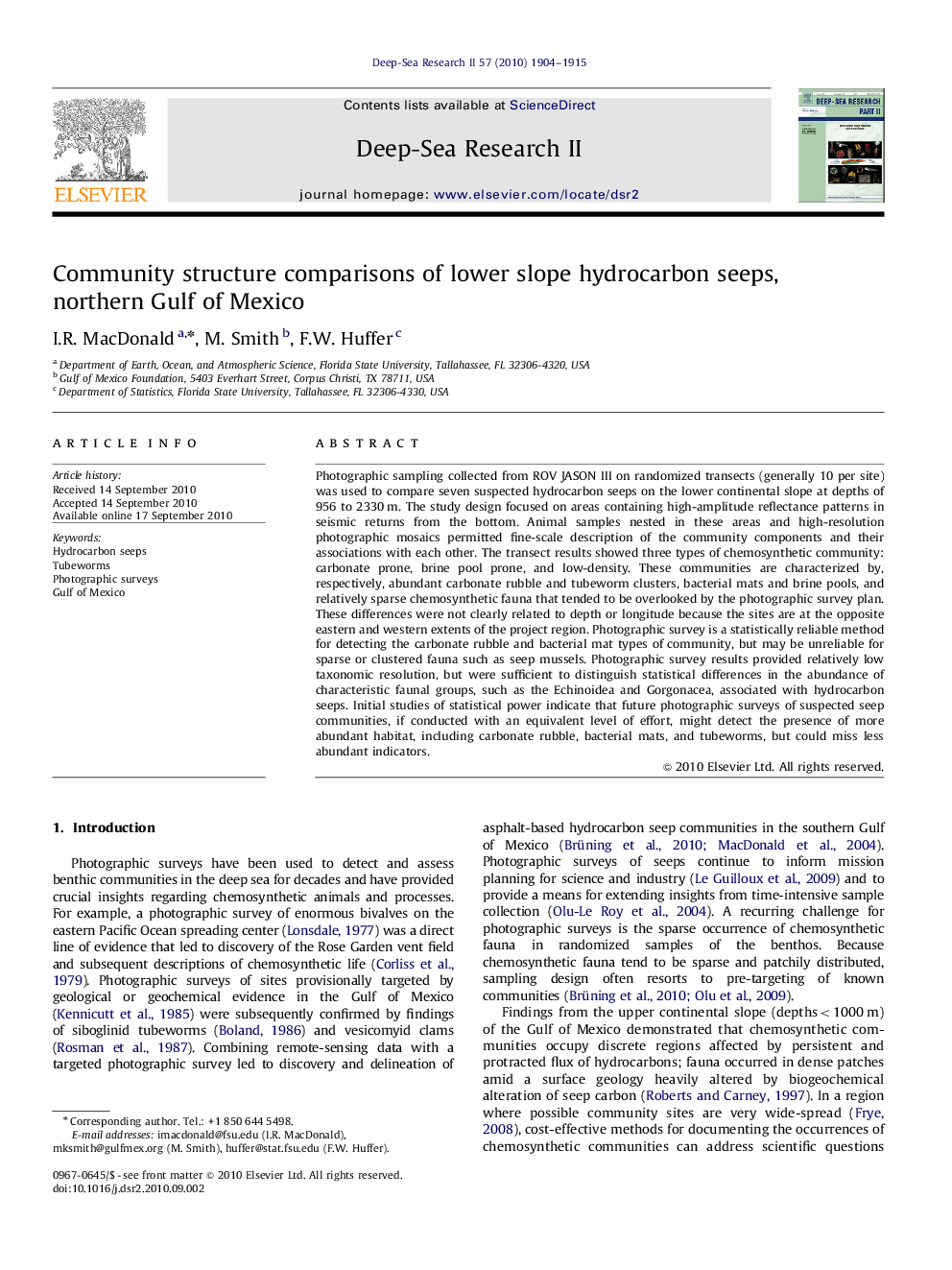| کد مقاله | کد نشریه | سال انتشار | مقاله انگلیسی | نسخه تمام متن |
|---|---|---|---|---|
| 6384344 | 1626471 | 2010 | 12 صفحه PDF | دانلود رایگان |
عنوان انگلیسی مقاله ISI
Community structure comparisons of lower slope hydrocarbon seeps, northern Gulf of Mexico
دانلود مقاله + سفارش ترجمه
دانلود مقاله ISI انگلیسی
رایگان برای ایرانیان
موضوعات مرتبط
مهندسی و علوم پایه
علوم زمین و سیارات
زمین شناسی
پیش نمایش صفحه اول مقاله

چکیده انگلیسی
Photographic sampling collected from ROV JASON III on randomized transects (generally 10 per site) was used to compare seven suspected hydrocarbon seeps on the lower continental slope at depths of 956 to 2330Â m. The study design focused on areas containing high-amplitude reflectance patterns in seismic returns from the bottom. Animal samples nested in these areas and high-resolution photographic mosaics permitted fine-scale description of the community components and their associations with each other. The transect results showed three types of chemosynthetic community: carbonate prone, brine pool prone, and low-density. These communities are characterized by, respectively, abundant carbonate rubble and tubeworm clusters, bacterial mats and brine pools, and relatively sparse chemosynthetic fauna that tended to be overlooked by the photographic survey plan. These differences were not clearly related to depth or longitude because the sites are at the opposite eastern and western extents of the project region. Photographic survey is a statistically reliable method for detecting the carbonate rubble and bacterial mat types of community, but may be unreliable for sparse or clustered fauna such as seep mussels. Photographic survey results provided relatively low taxonomic resolution, but were sufficient to distinguish statistical differences in the abundance of characteristic faunal groups, such as the Echinoidea and Gorgonacea, associated with hydrocarbon seeps. Initial studies of statistical power indicate that future photographic surveys of suspected seep communities, if conducted with an equivalent level of effort, might detect the presence of more abundant habitat, including carbonate rubble, bacterial mats, and tubeworms, but could miss less abundant indicators.
ناشر
Database: Elsevier - ScienceDirect (ساینس دایرکت)
Journal: Deep Sea Research Part II: Topical Studies in Oceanography - Volume 57, Issues 21â23, November 2010, Pages 1904-1915
Journal: Deep Sea Research Part II: Topical Studies in Oceanography - Volume 57, Issues 21â23, November 2010, Pages 1904-1915
نویسندگان
I.R. MacDonald, M. Smith, F.W. Huffer,